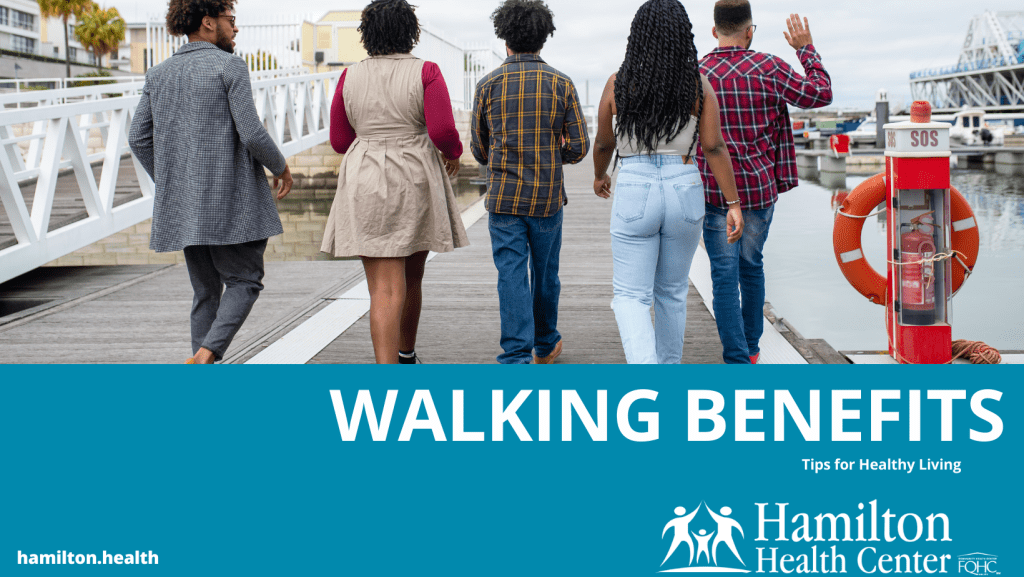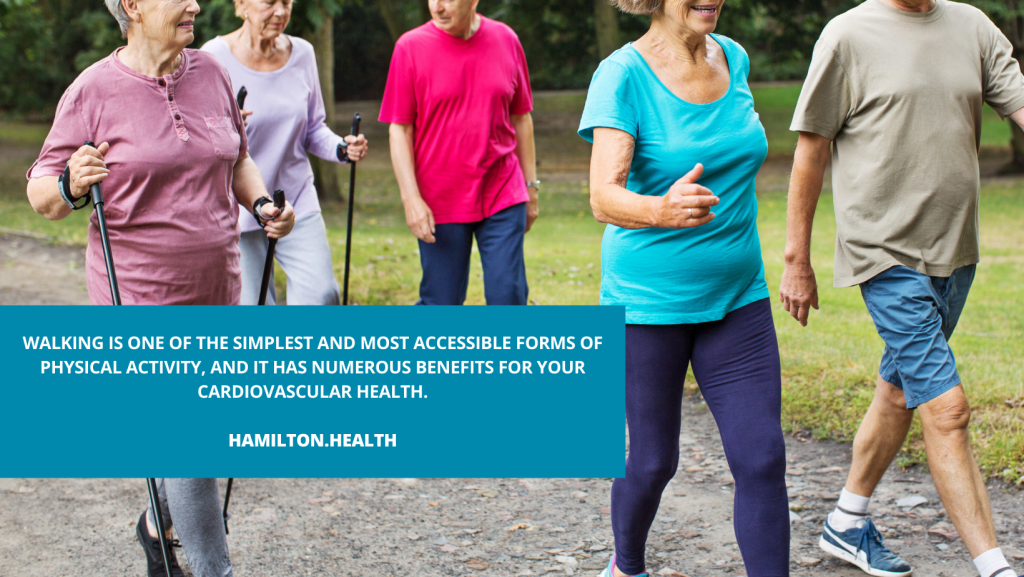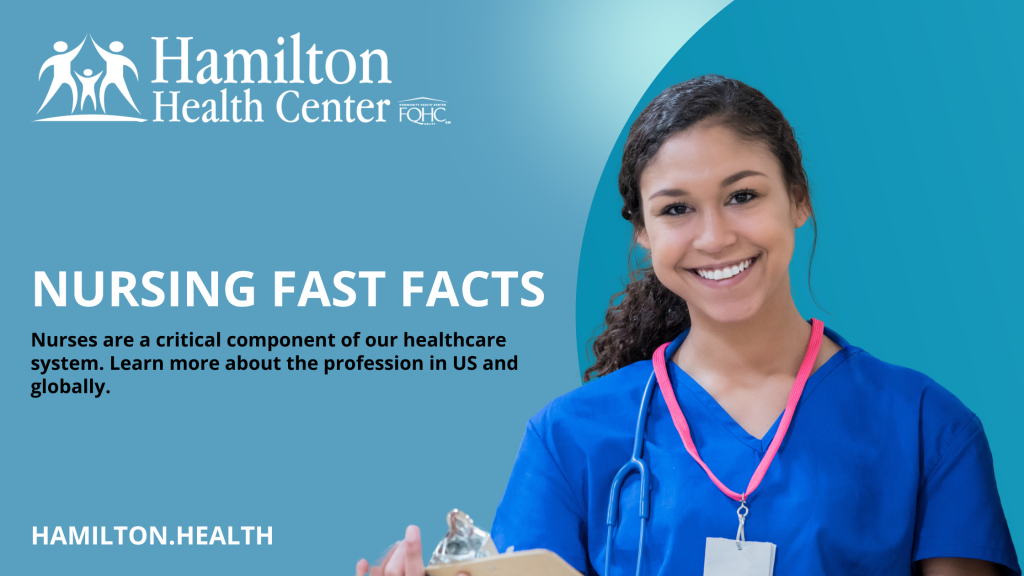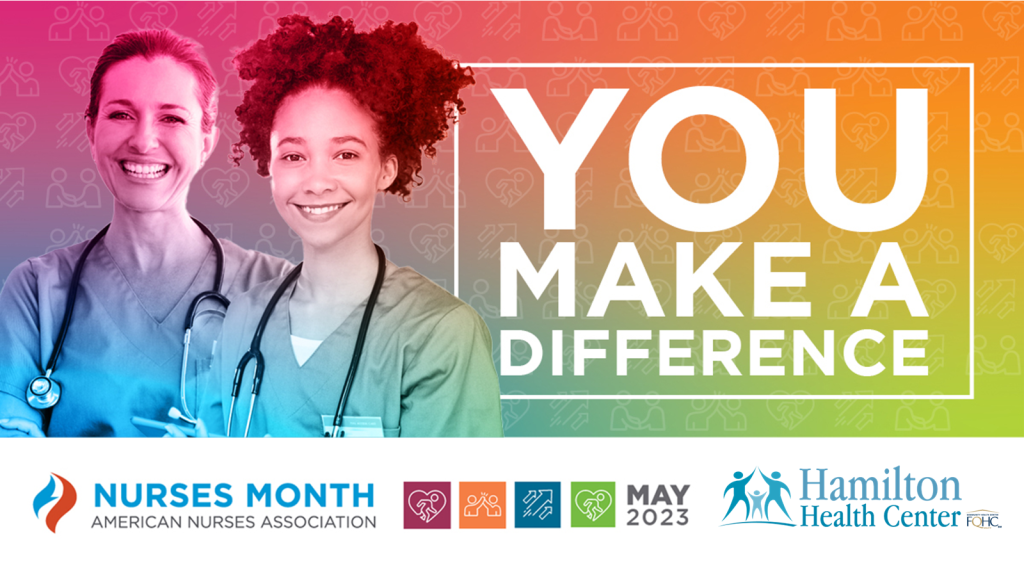How to Tell if Your Sinus Infection Is Bacterial or a Virus
A sinus infection, also called sinusitis, is one of the most common reasons people visit a doctor. It occurs when your sinuses, or the cavities around your nose and eyes, become inflamed and swollen, typically due to a viral or bacterial infection. When sinuses swell, they prevent mucus from draining. This often causes facial pressure and discomfort.
It’s important to determine whether a bacteria or virus is causing your sinus infection so you can treat it effectively and feel better sooner. At Hamilton Health Center, our compassionate health care providers are ready to help. Call us today at (717) 232-9971 to schedule an appointment.
Are Sinus Infections Viral or Bacterial?
Sinus infections are usually caused by the same viruses that lead to the common cold. For example, if you have an upper respiratory infection, the virus causing your cold might also enter your sinuses. Once the germ is in your sinuses, it can breed and lead to inflammation and uncomfortable symptoms.
Bacterial infections and allergies can also cause sinus inflammation.
How Can You Tell if Your Sinus Infection Is Bacterial or Viral?
Doctors mainly consider how long you’ve had the infection to determine whether it’s viral or bacterial. Sinus infection symptoms caused by a virus usually start improving after five days.
Bacteria sinus infections typically last more than 10 days without symptom improvement. Also, if your symptoms improve after a few days but then get worse, you might have a bacterial infection.
What Is the Treatment for a Sinus Infection Caused by a Virus?
Treatment for a viral sinus infection usually involves self-care and relieving symptoms until the infection gets better on its own. This may include taking over-the-counter pain relievers to ease a headache or facial pain.
Other at-home remedies include drinking plenty of fluids, rinsing your nasal passages with a saline solution or taking a decongestant.
What Is the Treatment for a Bacterial Sinus Infection?
Like a viral infection, bacterial sinusitis might clear up on its own. However, if your symptoms are severe, have worsened over a few days, or persist beyond 10 days, we recommend consulting a doctor. A doctor may prescribe an antibiotic to fight the bacteria causing the infection.
Schedule Your Appointment With Hamilton Health Center
If you’re concerned about your or your child’s sinus infection symptoms, we’re here for you at Hamilton Health Center. We offer affordable, patient-centered medical services to adults and children in Harrisburg, Pennsylvania, and surrounding areas. Call us today at (717) 232-9971 to schedule your appointment.
Baby Food Tips

Correctly storing and heating your baby’s food promotes safe feeding and can save on costs. Here are some essential tips about baby food and how you and your baby can enjoy feeding time together.
How Long Can Baby Food Stay in the Fridge?
You can store baby food containing fruits and vegetables in the fridge for up to two days and refrigerate food containing meat or poultry for up to one day. Baby food contains essential building blocks necessary for your baby’s health. You can help preserve vitamins and minerals by serving their food fresh and handling it correctly.
Knowing how to reheat baby food is important for food safety. You can reheat baby food in a pan or the microwave until it’s steaming hot to kill off any bacteria. Don’t let the food cool down too long, as bacteria start growing within two hours.
How Many Baby Food Pouches a Day Are Appropriate?
The number of baby food pouches you give your baby a day depends on their contents. Stick to a maximum of two pouches a day, and always read the labels before buying them.
When choosing baby food pouches, quality over quantity is always best, as some offer more health benefits than others. Feeding your baby with pouches high in fiber and low in sugar is ideal.
How Long Is Homemade Baby Food Good For?
Homemade baby food can stay fresh for up to two days in the fridge and one month if you freeze it. Reheat the food in a new container every time. Homemade baby food is a great alternative to store-bought varieties, and you can save money by keeping it simple.
It’s best to prepare your baby’s food daily or every other day. Store it in a clean container covered with a tight lid. Avoid feeding your baby out of the storage container, as saliva and other bacteria can contaminate the food.
Contact Hamilton Health for the Pediatric Support You Need
Navigating the choices you have when feeding your baby can be overwhelming, as you want to give your little one the best. Having a solid support structure to assist you can significantly relieve the burden.
Hamilton Health is a Federally Qualified Health Center (FQHC). We have a Women, Infants and Children (WIC) Program for those on Medicaid or who cannot afford private care. You can also have a look at our pediatric services and call us at (717) 232-9971 or contact us through our other channels today.
What Are the Most Common STDs?

Knowledge is power when it comes to your health, especially your sexual health. One of the best ways to keep yourself and your partner healthy is to understand the signs and symptoms of STDs or STIs. Hamilton Health Center offers STD testing on a walk-in basis to help members of the Harrisburg community stay safe and healthy.
What Are the Most Common STDs in Women?
Some of the more common STDs for women are:
- Human papillomavirus (HPV)
- Gonorrhea
- Chlamydia
- Genital herpes
If you experience the following symptoms, it is wise to undergo testing for one of the STIs above:
- Pain or burning during urination
- Changes in the look or consistency of vaginal discharge
- Itching in the vaginal area
- Pain during sex
- Abnormal bleeding
- Rashes or sores
What Are the Most Common STDs in Men?
While men can experience a wide range of STDs, some more common diagnoses include:
- Hepatitis A
- Hepatitis B
- Herpes
- Syphilis
If you experience the following symptoms, it is wise to undergo testing for one of the STDs above as soon as possible:
- Diarrhea
- Fever
- Joint and muscle pain
- Loss of appetite
- Itching, burning or tingling sensation
- Blisters or warts on the genital areas or mouth
What Age Are STDs Most Common?
Anyone who has unprotected sex can get an STD regardless of their age. While most cases are in men and women under 25, there has been a rise in infections in people over 65. Part of this increase in the older population is that older adults often underestimate their risk and do not take proper precautions.
STDs are also easier to miss in older adults as many symptoms mimic other common health issues. Depending on the STI, the individual may present no symptoms at all. Regardless of your age, it is essential to undergo screening for STIs before engaging in sexual activity and to keep your health care provider informed about any new partners or symptoms you are experiencing.
When Can I Get an STD Test?
Most STDs do not have noticeable symptoms, which makes testing essential to determine if you have an STD. Every STD has a different incubation and window period, which is the time between exposure and when a test can accurately detect the organism. If you know you were exposed to an STI, you will want to consult your doctor about when to undergo testing to ensure you have the most accurate results.
If you are unsure whether you were exposed to an STD and would still like to undergo testing, you can consult with your doctor about an accurate testing timeline.
Keep Yourself and Your Partner Safe With STD Testing From Hamilton Health Center
Give yourself and your partner the gift of peace of mind when you schedule STI Testing at Hamilton Health Center. Our adult STI clinic is a safe and judgment-free zone operated by knowledgeable providers who are happy to answer any questions. We also provide risk reduction tools like condoms at no cost to help you stay safe in future sexual encounters. Visit our clinic or call 717-232-9971 to learn more today.
Whooping Cough Symptoms and Facts

Whooping cough is a highly contagious infection in the respiratory tract. Most cases of whooping cough are easily identifiable through an intense cough and a whooping sound that occurs as the person takes a breath. While most people received the whooping cough vaccine when they were infants, the infection has found its way back into many communities. Knowing whooping cough facts and symptoms to look for can help you effectively protect yourself from becoming sick.
How to Tell if Your Kid Has Whooping Cough
Symptoms of whooping cough in children can vary depending on the child. For infants, the symptoms may appear as a pause in the breath, while babies may have a very quiet cough. In children, whooping cough symptoms may take three different stages.
The first stage can last up to two weeks and includes symptoms such as a runny nose and low fever. In the second stage, the child may experience a dry cough or the characteristic whooping noise for up to 10 weeks. In the third stage, the child might see a decrease in coughing, but it can continue to bother them for up to two months.
Whooping Cough Symptoms
Many call whooping cough the “100-day cough” since it lasts over three months. After becoming infected with whooping cough, the symptoms can take 10 days or longer to appear. The full list of symptoms includes:
- Running nose
- Congestion
- Cough
- Watery eyes
- Vomiting
- The face turns red or blue after coughing
- Extreme fatigue
- A high-pitched whoop sound during the next intake of breath
In some cases, the individual will only have a persistent hacking cough.
How Contagious Is Whooping Cough?
Whooping cough is highly contagious and spreads through coughing and sneezing. Even if the individual has mild symptoms, they can spread the bacteria to others.
What’s the Recovery Time for Whooping Cough?
Whooping cough recovery time can take two to three months. However, when you reach the third and final stage of the illness, your immune system is weak, which may cause you to become more susceptible to other diseases. If you contract another illness, it can extend your recovery time.
Tips for Whooping Cough Prevention
Receiving the whooping cough vaccine is the best method for prevention. Since the vaccine’s effectiveness fades over time, it’s best to make an appointment with your doctor if you were in close contact with someone with whooping cough.
Protect Yourself From Whooping Cough With Hamilton Health Center
Whooping cough is a severe disease that is easily preventable with help from Hamilton Health Center. Schedule an appointment to receive a whooping cough vaccine for yourself or your child today.
A Parent’s Guide to Children’s Doctor’s Visits

Going somewhere with a young child can be challenging, so it’s understandable that you may want to schedule doctor’s appointments only when your child is genuinely ill. However, regular doctor visits are vital to ensure lifelong health and development, so it’s worth finding a way to make them happen.
What Is a Well-Child Visit?
A well-child visit is a checkup for healthy children. As a parent, you can use this appointment to talk to your child’s doctor and learn what to expect as your child reaches certain milestones. You can also ask your doctor questions about your child and their health.
How Often Do Children Go to the Doctor?
How often you schedule a well-child visit will depend on your child’s age. Once your child reaches age 3, you will schedule appointments annually.
How to Prepare for a Well-Child Visit
To prepare for a well-child visit, you will want to ensure you have all the required paperwork, including vaccination records. If your child is a newborn going in for their first pediatrician visit, you may need discharge papers from the hospital.
You can also involve your children by letting them know what to expect. If you are going to a well-child visit with an older child, you can help them create a list of questions they may want to ask so they feel comfortable talking to medical professionals.
What to Expect at a Children’s Doctors Visit
Generally, you can expect well-child visits to follow the same pattern regardless of your child’s age. Once the pediatrician completes the physical exam, they will:
- Check your child’s height and weight.
- Screen for issues with their vision and hearing.
- Assess their progress toward developmental milestones.
- Perform any necessary immunizations.
- Complete any applicable lab tests.
How to Choose a Pediatrician
When it comes to choosing the right pediatrician for your child, there are several factors you want to consider, like:
- The office location.
- If the OB-GYN recommended the pediatrician.
- The doctor’s credentials and experience.
- Initial thoughts after the first visit.
Questions to Ask During Your Child’s Doctor’s Visits
Writing down a few questions before your well-child visit can help you stay on top of your child’s health. Some questions to ask include:
- Is my child reaching the correct growth milestones?
- When does my child need vaccinations?
- How can I keep my child from getting sick?
Have Your Child Start a Healthy Habit Early With Hamilton Health Center
Hamilton Health Center is here to be your trusted partner in taking control of your child’s health. Our pediatric center is bilingual, and we will help your child feel comfortable as they build healthy habits. Schedule a pediatrician appointment today!
5 Most Common STDs in Women
Learning about the most common sexually transmitted infections (STIs) that affect women can help you recognize symptoms and receive treatment as soon as possible. In some cases, knowing how these diseases spread — through vaginal, oral or anal sex — and the risk factors can even help you prevent them entirely.
Accurate diagnosis and effective treatment are critical — the earlier, the better.
1. Human Papilloma Virus (HPV)
Beyond its status as the most common STI women are diagnosed with, HPV infects over 40 million people globally. Consider these facts about HPV:
- People carrying HPV may show no signs or symptoms, making it easier to pass the infection to their partners unknowingly.
- Abnormal Pap test results or genital warts can indicate an infection.
- There are more than 100 kinds of HPV, and some strains have serious health consequences for women, like cervical cancer.
While HPV has no cure, you can ask your doctor for an FDA-approved vaccine to prevent infection if you are sexually active.
2. Gonorrhea
While gonorrhea is easy to treat with antibiotics, women are especially vulnerable to this infection as it impacts the cervix, causes pelvic inflammatory disease and can damage the reproductive system. Some women don’t notice symptoms immediately, making STD testing crucial. Signs of gonorrhea that women should look out for include:
- Painful sex.
- Abdominal cramps.
- A yellow or green discharge.
3. Chlamydia
Chlamydia always tops the list of most common STIs for women and men because it often goes unnoticed. This bacterial infection can leave women asymptomatic with few or no symptoms. Individuals unwittingly spread the infection to their sexual partners, not knowing that this condition can put a woman’s reproductive health at serious risk.
Like gonorrhea, chlamydia has a straightforward treatment — oral antibiotics. Women who are sexually active should be aware of the condition’s most common symptoms, like vaginal discharge and painful sex.
4. Hepatitis
Another STI prevalent among women is hepatitis. Although there are five main strains of this virus, hepatitis B and C can be passed sexually and cause severe health issues that impact liver health. Some people have no symptoms, so women often don’t realize they have the disease until it causes further problems. Signs that could point to infection include severe fatigue, fever, nausea and joint pain.
There is no cure for Hepatitis B, but it can be managed. New hepatitis C treatments show promise for curing the disease. There are also hepatitis vaccines. So, talk to your doctor to discuss your risk of infection.
5. Genital Herpes
Painful blisters and sores in the most private of areas — these are the telltale signs of genital herpes. The herpes simplex virus has two forms — HSV1 and HSV2. The second type is what causes genital sores. Other signs of genital herpes women should look out for are flu-like symptoms, skin rash and a pins and needles sensation.
There is no cure for herpes, although it can be managed with medication that can lessen the severity and frequency of outbreaks. Once women become infected, they are carriers for life, even if the herpes virus remains dormant. Testing ensures you don’t pass this STD on to others.
Most Common Signs of STDs in Women
Women are more likely to overlook STI signs than men — but why? In females, many STDs remain asymptomatic. This lack of obvious symptoms delays diagnosis and treatment.
Another concern is that typical signs of STIs resemble fairly common women concerns, such as yeast infection or irregular menstruation.
If you are a woman who is sexually active, it’s crucial to know the most common symptoms of STDs. These include:
- Painful urination.
- Changes in urine.
- Vaginal discharges.
- Itching.
- Painful intercourse.
- Itching.
- Bleeding or spotting between periods or after sex.
STD testing means you get the right diagnosis and treatment — but you must act fast.
STD Preventive Measures for Women
While women are at a higher risk for catching STIs, they can take several steps to protect themselves. After all, prevention is the best way to reduce the risk of developing STDs. Women can safeguard their health with simple preventive measures like:
- Speaking with their doctors about regular STI testing if they are having sex.
- Communicating with their partners about safe sex and sexual health.
- Encouraging sexual partners to receive regular STD testing.
- Avoiding sex if they believe their partner may have an infection.
- Committing to mutual monogamy with one sexual partner or considering abstinence.
- Carrying a condom or another barrier method to use during sex.
- Avoiding substances like drugs and alcohol before sex to prevent unsafe sexual practices.
Receive STD Testing and Treatment at Hamilton Health
Hamilton Health Center proudly provides patients of all genders with essential health services, empowering our community to lead happier, healthier lives. Our skilled and compassionate professionals provide the highest level of health care, including judgment-free STD testing and STD prevention education. We also maintain a safe and comfortable setting for women’s health services.
If you want to learn more about our comprehensive care, book an appointment online or call us at 717-232-9971.
National Health Center Week 2023: The Roadmap to a Stronger America

We are excited to announce that National Health Center Week (NHCW) 2023 will be taking place from August 6-12. This annual event aims to celebrate the vital role that health centers play in communities across the country. With this year’s theme being ‘The Roadmap to a Stronger America,’ we are highlighting the important contributions that health centers make in building a healthier and more resilient nation.
National Health Center Week 2023 Focus Days
Throughout NHCW, we will be focusing on various aspects of public health and healthcare, with each day dedicated to a specific topic. On Sunday, August 6, the theme is Public Health in Housing. The day sheds light on the importance of ensuring healthy living conditions for all. Monday, August 7 is dedicated to Healthcare for People Experiencing Homelessness. This day emphasizes the need for accessible and quality healthcare services for this vulnerable population.

On Tuesday, August 8, we will be addressing Agricultural and Rural Worker Health. For instance, Health Care centers like Hamilton play an essential role in providing comprehensive healthcare to agricultural workers. On August 9th we will show our appreciation for patients and highlight the importance of their active involvement in their own healthcare.
NHCW continues on August 10th with Stakeholder Appreciation Day. This day recognizes the diverse stakeholders who contribute to the success of health centers. On Friday, August 11, we will express our gratitude to the hardworking health center staff who provide exceptional care to their communities day in and day out. Finally, on Saturday, August 12, we will focus on Children’s Health, highlighting the critical role that health centers play in ensuring the well-being of our youngest population.
We invite everyone to join us in celebrating National Health Center Week 2023 and to take part in the various events and activities that will be taking place throughout the week. Together, let’s strengthen our nation’s health and build a healthier future for all.
Additional Resources
Hamilton Health Center Services
National Association of Community Health Care Centers (NACHC)
National Walking Month

National Walking Month is a yearly celebration that takes place in the month of May in the United States. The event is aimed at promoting the benefits of walking as a form of exercise and encouraging people to incorporate more walking into their daily routines.
The origins of National Walking Month can be traced back to the establishment of National Bike Month in 1956, which was created to encourage cycling as a mode of transportation and as a form of physical activity. In the early 2000s, the American Heart Association and other health organizations began promoting walking as an alternative to cycling, and National Walking Month was created in 2007 to promote walking as a healthy and accessible form of exercise.
Walking has many benefits for your overall health. The American Heart Association recommends that adults engage in at least 150 minutes of moderate-intensity exercise, such as brisk walking, per week.
During National Walking Month, individuals and organizations are encouraged to organize walking events and activities to promote the benefits of walking. These may include group walks, walking challenges, and educational events about the benefits of walking.
By promoting walking, we all can encourage people to incorporate more physical activity into their daily lives. Here are five reasons why walking is good for you:
Walking improves cardiovascular health
Walking is one of the simplest and most accessible forms of physical activity, and it has numerous benefits for your cardiovascular health. When you walk, your heart rate increases, which improves blood circulation throughout your body. This increased blood flow helps to strengthen the heart muscle and reduce the risk of cardiovascular disease.
Walking increases blood flow because it causes the muscles in the body, especially the legs, to contract and relax, which helps to pump blood throughout the body. Walking can also help to lower blood pressure, which is a major risk factor for heart disease. Regular walking can reduce systolic blood pressure by an average of 10 points, which can significantly reduce the risk of heart attack and stroke.
In addition to its cardiovascular benefits, walking can also help to lower cholesterol levels. High cholesterol is another major risk factor for heart disease, and walking can help to lower LDL (bad) cholesterol levels while increasing HDL (good) cholesterol levels.
Walking provides a boost to your mood and mental health
Walking is a simple and easy physical activity that has been found to have numerous benefits for both physical and mental health. One of the most notable benefits of walking is its ability to boost mood and mental health.
Research has shown that walking can increase the production of endorphins, which are the body’s natural feel-good chemicals. Endorphins can help to reduce feelings of stress and anxiety and improve mood. Walking has also been found to increase the production of neurotransmitters such as dopamine and serotonin, which can help to regulate mood and improve feelings of happiness and well-being.
In addition to its impact on neurotransmitters, walking can also help to reduce inflammation in the body. Chronic inflammation has been linked to a range of mental health issues, including depression and anxiety. Walking can help to reduce inflammation, which in turn can have a positive impact on mental health.
Another benefit of walking is its ability to provide a sense of mindfulness and relaxation. Walking can be a meditative activity, allowing individuals to focus on their surroundings and take in the sights and sounds of their environment. This can help to reduce feelings of stress and anxiety and promote a sense of calm.
Meditative forms of movement, such as walking, yoga or Tai Chi, have been found to be helpful for reducing stress, anxiety, and depression. They promote relaxation, mindfulness, and physical well-being, which can have a positive impact on overall health. Additionally, these activities can improve balance, flexibility, and strength.
Finally, walking can be a social activity, providing opportunities for individuals to connect with others and build social support networks. Social support has been found to be an important factor in mental health and well-being, and walking can help to facilitate these connections.
Walking is often more enjoyable with friends because it provides an opportunity to socialize and connect while being active. Walking with others can also make the experience feel more engaging and motivating.

Walking promotes weight loss and management
National Walking Month gives us a reminder of the benefits that exercise has to our waistlines. Walking is an incredibly effective way to lose weight, and there are a number of reasons why this is the case. Here are some of the most important factors to consider:
First and foremost, walking is a low-impact exercise that is easy on your joints. This means that you can walk for longer periods of time without experiencing the same kind of pain or discomfort that you might feel when running or doing other high-impact activities. This is important because the more time you spend exercising, the more calories you will burn and the more weight you will lose.
Another key factor is that walking is a great way to increase your heart rate and get your blood pumping. This increases your metabolism, which means that you will burn more calories even when you are not actively exercising. In fact, studies have shown that regular walking can increase your metabolism by as much as 20%.
In addition to these physiological benefits, walking is also a great way to reduce stress and improve your mood. When you are stressed, your body releases a hormone called cortisol, which can lead to weight gain and other negative health effects. Walking helps to reduce cortisol levels, which in turn can help you lose weight and feel better overall.
The low barrier of entry to beginning a walking routine makes the form of exercise accessible and easy to fit into your daily routine. You don’t need any special equipment or gym membership to go for a walk, and you can do it anytime and anywhere. This makes it a great option for people who are busy or don’t have access to other types of exercise.
By making walking a regular part of your exercise regimen, you can achieve your weight loss goals and improve your overall health and well-being.
Walking proven to reduce chronic diseases and pain
Walking regularly can help to reduce the risk of chronic diseases such as diabetes, cancer, and Alzheimer’s disease. It can also help to improve your immune system and reduce inflammation in the body. For instance, studies show that “people between the ages of 40-79 who took 9,826 steps per day were 50% less likely to develop dementia within seven years.”
Walking can help to improve your bone density and reduce your risk of osteoporosis. It can also help to improve joint mobility and reduce the risk of arthritis. As we age, it becomes important to maintain physical activity.
Walking can also be an effective way to manage diabetes. Regular walking can improve insulin sensitivity and glucose tolerance, which can help to lower blood sugar levels. This can be particularly beneficial for people with type 2 diabetes, as walking can help to reduce the need for medication.
Walking is a simple and effective way to improve your health and well-being. By incorporating walking into your daily routine, you can experience numerous benefits that can improve your quality of life. Walking also is a great way to maintain a healthy weight. Walking burns calories, and regular walking can help to reduce body fat and maintain a healthy body weight. This can help to reduce the risk of numerous health problems, including heart disease, diabetes, and certain types of cancer.
In conclusion, walking is an excellent form of exercise for improving cardiovascular health. Regular walking can help to lower blood pressure, cholesterol levels, and blood sugar levels, while also helping to maintain a healthy weight. So, if you’re looking for a simple and effective way to improve your heart health, start walking today!
Looking for resources of walking? Ask your Hamilton provider today!
National Nurses Month: Fast Facts About Nursing

May is National Nurses Month in the United States. The nursing profession is an essential part of the healthcare industry. Nurses play a crucial role in ensuring the health and well-being of patients. Nursing providers are responsible for providing direct patient care, administering medication, monitoring vital signs, and performing various medical procedures.
Nurses are also instrumental in patient education, providing patients and families with information on managing their health conditions, medication management, and lifestyle changes. They are often the first point of contact for patients seeking medical attention, and their expertise can guide patients towards the appropriate medical care.
Here are just a few facts and figures about nurses in the US and globally in honor of Nurses Month.
Nursing is the largest healthcare profession in the US
There are more than 4 million registered nurses (RNs) and licensed practical nurses (LPNs) working in the country as of 2021. The Bureau of Labor Statistics (BLS) projects that employment of registered nurses will grow 9% from 2020 to 2030, which is faster than the average for all occupations. On average, RN’s make a median annual salary of $75,330 according to the BLS.
The nursing profession is predominantly female (for now)
Approximately 90% of nurses in the US are women, but that number has changed in the 21st century. Since 2008, the number of male nurses has nearly doubled as more men embrace the profession. One reason for the shift? There is a pervasive nursing shortage in the country. Indeed, there is currently a shortfall of up to 1 million nurses in the country. The recent COVID-19 pandemic has highlighted the importance of nurses and their role in the healthcare system and put a spotlight on the shortages in the profession.
Nursing requires licensing
In the US, nurses must be licensed to practice care. Nurses must adhere to a code of ethics that outlines the profession’s values and responsibilities. There are state boards of nursing responsible for regulating the practice of nursing within state where the nurse resides. The National Council Licensure Examination (NCLEX) is the standardized test that nurses must pass in order to become licensed in the US. In addition to licensing, nurses are often members of professional organizations. The American Nurses Association (ANA) is the largest professional organization for nurses in the US, with more than 4 million members.
Nurses are highly educated
Nurses Month gives us an opportunity to look at what sets the professional apart. For instance, nursing education can take several different paths, including earning an associate degree in nursing (ADN), a bachelor of science in nursing (BSN), or a master of science in nursing (MSN). Nursing students must complete a clinical component as part of their education, where they gain hands-on experience in a healthcare setting. The Institute of Medicine (IOM) has recommended that 80% of the nursing workforce have a BSN or higher degree by 2020. Advanced practice registered nurses (APRNs) have additional education and training beyond that required for RNs, allowing them to provide a wider range of healthcare services, such as diagnosing and prescribing medications. The four types of APRNs are nurse practitioners, certified nurse midwives, clinical nurse specialists, and certified registered nurse anesthetists.
In addition to education, nurses usually select a specialization to focus on professionally. Nurses can specialize in a wide variety of areas, including pediatrics, oncology, critical care, emergency medicine, and geriatrics.
Nurses enjoy their work
Career fulfillment is an elusive goal for many, but studies indicate that nurses are have positive feelings about their work. A Harris poll of 300 nurses found that 99% of respondents are proud of the work they do. An additional 90% of nurses indicated they like their jobs.

Nurses make a real impact
Nurses Month is an opportunity for us to take the time to show appreciation for the people who comprise the profession. Nursing is a challenging but rewarding vocation that offers a wide range of career opportunities and the chance to make a meaningful impact on the lives of others.
Beyond patient care, nurses also contribute to healthcare research, policy development, and education. They bring a unique perspective and expertise to these areas, which can help improve and advance the healthcare industry as a whole.
The nursing profession is also critical in addressing the healthcare workforce shortage. With an aging population and increasing demand for healthcare services, the need for qualified nurses has never been greater.
In addition to the practical importance of the nursing profession, it is also a profession that requires a great deal of empathy and compassion. Nurses are provide comfort and support. In addition, they are at frontlines of patient care and recovery.
In summary, the nursing profession is essential to the health and well-being of individuals and society as a whole. Nurses are instrumental in providing direct patient care, contributing to healthcare research and policy development, and addressing the healthcare workforce shortage. Their empathy and compassion make them invaluable members of the healthcare team, and their expertise can guide patients towards better health outcomes.


